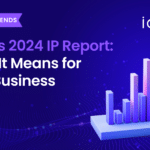
As 2025 approaches, the intellectual property (IP) landscape is undergoing a rapid transformation. Advances in technology, global efforts for sustainability, and the growing digital economy are driving changes that businesses and innovators must navigate carefully. Keeping up with these shifts isn’t just important—it’s necessary to stay competitive. Below, we explore the top IP trends shaping 2025 and how businesses can proactively prepare for the future.
1. AI-Driven Innovation and Intellectual Property Ownership
Again, or better yet still, the rise of artificial intelligence (AI) is changing the way we think about creativity and innovation. With AI now able to generate inventions, designs, and even creative works, the big question is: who owns them? This has led to debates about how IP laws should define ownership and eligibility for patents. While countries like New Zealand and Thailand are pioneering legal adjustments for AI-generated works, many jurisdictions are expected to follow.
Businesses must craft clear strategies for managing AI-generated content while ensuring robust IP protections for these new forms of innovation. As AI’s role in research and development continues to grow, adapting to evolving IP frameworks will be critical to maintaining a competitive edge.
Key Action: Develop policies for AI-generated intellectual property and stay informed about regulatory developments in key markets.
2. Cross-Border IP Enforcement and Global Collaboration
As businesses become more connected through trade and digital platforms, protecting IP across borders is becoming harder. Digital piracy, counterfeit goods, and patent infringement are now global issues requiring international solutions.
One notable example is the European Union’s Unified Patent Court, which simplifies patent enforcement across member states. Such frameworks are invaluable for companies operating globally.
Countries like China and Thailand are also modernizing their IP systems, to make enforcement easier and encourage cooperation with other nations. Businesses must adopt strategies that address the complexities of protecting IP across multiple jurisdictions in an interconnected global economy.
Key Action: Work on strategies to enforce your IP rights internationally and build relationships with global partners.
3. Green Technologies and Sustainability Patents
Sustainability is no longer optional—it’s central to innovation. The demand for green technology patents is growing fast as businesses prioritize renewable energy, sustainable manufacturing, and eco-friendly solutions. Countries such as China and New Zealand are speeding up their green technology patent applications, recognizing their global importance.
To remain competitive, organizations must proactively patent their eco-friendly innovations. Collaborative models, like open licensing and patent pools, may also emerge, fostering the widespread adoption of technologies that address climate challenges.
Key Action: File early patents for green technologies and explore collaborative licensing models to maximize impact and adoption.
4. Cybersecurity Innovations and Patents
As cyber threats escalate globally, the need for new solutions in cybersecurity is more urgent than ever. Innovations in AI-driven security systems, post-quantum cryptography, and disinformation countermeasures are becoming critical. This urgency is translating into a competitive surge in cybersecurity patent filings.
Governments are likely to introduce stronger regulatory frameworks to protect these innovations and encourage advancements in cybersecurity. Businesses developing technologies in this space must act fast to secure IP rights and safeguard both their innovations and the digital infrastructure they protect.
Key Action: Prioritize patent filings for cybersecurity technologies and stay ahead of emerging regulations to secure your innovations.
5. Legislative Shifts and IP Law Adjustments
IP laws are evolving to keep up with the digital age. Upcoming legislation, such as the National AI Initiative Act, and updates to patent litigation procedures will redefine how patents are filed, enforced, and upheld globally.
Changes to patent systems will impact the protection of digital assets and cross-border IP enforcement. These shifts mean that businesses need to stay informed and be ready to adjust their strategies to maintain compliance and protect their assets.
Key Action: Monitor legislative changes and adjust your IP strategy to maintain strong protections across jurisdictions.
6. AI-Powered IP Management and Automation
Managing intellectual property portfolios is becoming more complex, but AI tools are helping businesses streamline the process. By 2025, businesses will increasingly rely on AI-powered platforms to automate patent searches, competitor tracking, and infringement monitoring. These tools not only save time but also provide insights that can lead to better decision-making.
Beyond automation, AI-driven analytics will uncover licensing opportunities and flag infringement risks early, enabling businesses to act strategically. Investing in AI-powered IP management solutions will be essential to staying ahead in a fast-paced, innovation-driven market.
Key Action: Leverage AI-powered IP tools to streamline portfolio management and gain actionable insights
7. Digital Content Protection and Copyright Reform
The explosive growth of digital content markets has brought new challenges in protecting intellectual property. From digital piracy to unauthorized content use, businesses face constant threats to their digital creations. At the same time, AI-generated content is testing the boundaries of existing copyright laws.
Governments worldwide are reforming copyright frameworks to address these challenges. Simultaneously, businesses are adopting AI-driven tools to monitor and safeguard their digital creations. By 2025, clearer guidelines and stronger enforcement mechanisms will help businesses protect their digital IP more effectively.
Key Action: Invest in digital content monitoring tools and stay updated on copyright reforms to secure your digital assets.
8. Regulatory Adaptations for Emerging Technologies
Emerging fields like the metaverse, biotechnology, and quantum computing are challenging current IP laws. These industries are creating entirely new categories of IP, requiring updated rules and frameworks.
For instance, virtual reality and mixed reality technologies within the metaverse will demand new categories of patent protections for virtual goods and experiences. Similarly, breakthroughs in biotechnology and quantum computing will necessitate legal adaptations to safeguard cutting-edge innovations.
Key Action: Monitor regulatory developments in emerging industries and secure IP rights early to protect your investments.
Final Thoughts
The IP trends in 2025 will be defined by rapid technological advancements, sustainability priorities, and global collaboration. As AI, green technologies, and digital innovations take center stage, businesses must adapt their strategies to protect and manage their intellectual property effectively.
By understanding these trends and leveraging tools like IamIP, organizations can position themselves to not only navigate but thrive in the future of intellectual property. Those who adapt quickly through strategic patenting, regulatory awareness, and automation will be best equipped to capitalize on opportunities and safeguard their innovations for years to come.
Search
Categories
- Announcement 6
- Case Study 1
- Expert Insights 7
- IamIP News 4
- Industry Trends 27
- Innovation Index 4
- New Release 9
- Platform News 2
- Press Release 1
- Webinar 13









